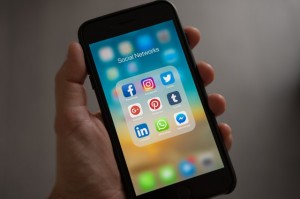 Have you ever noticed that it’s so much easier to remember information when we have visual cues, such as signs, diagrams, brightly-coloured or moving images? This is because our eyes are the one organ that is most directly connected to our brains, transmitting images via the optic nerve.
Have you ever noticed that it’s so much easier to remember information when we have visual cues, such as signs, diagrams, brightly-coloured or moving images? This is because our eyes are the one organ that is most directly connected to our brains, transmitting images via the optic nerve.
Our brains are literally “hardwired” to prefer visual information over the data received from our other senses. Visual images are received, and processed, much faster than other types of information.
The Power of Seeing
When we view just the right imagery, it has the power to stimulate our other senses. Our appetite increases, for example, when we see food that appears to be fesh and delicious. We might feel warm and relaxed looking at pictures of an inviting, sunny beach, or shiver with cold looking at an icy, snow-covered mountaintop. Images can even stir our emotions, and make us feel loved, happy, secure or frightened and worried.
This direct connection to the brain, and the powerful feelings and sensations that imagery can evoke within us, is likely why so many individuals simply skip articles and other types of text that are posted without a picture or other image. It’s also the focus of visually driven media such as Instagram and Pinterest.
Pinterest is a Way to Save, and Share, Information Visually
Pinterest is one of the newer social media channels, but its popularity is growing because it takes advantage of our brain’s preference for visual stimulation. Used correctly, it’s another way to inform others about our cause and encourage them to help be part of the solution by engaging with us.
The way that Pinterest works is that it allows users to create “pins” of their favourite things. A pin works in a similar way as a bookmark. You are simply saving a link to something that interests you and that might interest others, such as a great recipe, an article or even a video and instead of representing that link with text, you are using an image to “mark” its spot.
Users can create boards where they store their favourite pins by topic, and users can share, and save one another’s pins and boards. Users can also collaborate with others on shared boards.
Ways Pinterest Benefits Nonprofits
In nonprofit circles, we tend to place a lot of emphasis on the need to identify with our target audience and to “go” where they happen to be to increase the chance that they will receive our messages and be open to engagement. Nearly 70% of Pinterest users happen to be women, and, many nonprofits receive a substantial portion of their contributions from women, so Pinterest can be a great way to connect with this demographic and let them know about our nonprofit’s mission and how they can join in and help.
How to Use Pinterest to Boost Your Brand
When creating your nonprofit’s account, make sure to pick a username that will help to build your nonprofit’s brand identity. Don’t put all of your pins on the same board, but, create several boards around specific themes or topics that others will identify with your nonprofit and its brand.
Connect with other supporters by following the boards of your existing fans, such as your staff, volunteers, board members, donors and other supporters. Save some of the pins created by your followers that are relevant to your nonprofit and its story.
When creating a pin, ensure that you use a clear, high-resolution photo for the image. If the article or other post that you are pinning doesn’t have a great image, consider using one of your own for the pin. While you don’t have to pin all your posts on other social media, choose short articles or videos with images that humanise your cause and illustrate the impact made by your NFP.
Instead of just pinning articles with pictures or links to your videos and podcasts, consider converting some of your nonprofit’s statistics and other relevant data into charts, and graphs to visually convey information. You can emphasise the importance of your organisation’s work, and then pin the actual infographic to your board.
Generate more significant interest and involvement by others by inviting some of your supporters to contribute to your boards and make them a community-wide effort. While it’s easy to get started with Pinterest, our final tip for using it is a bit of a warning. Pinning, liking and sharing posts on your boards is so enjoyable that a lot of users worry that it’s addictive; so don’t be surprised if you find yourself having too much fun!

 Posted on 14,Nov |
Posted on 14,Nov |
 Posted by Anne
Posted by Anne 




There are no comments yet